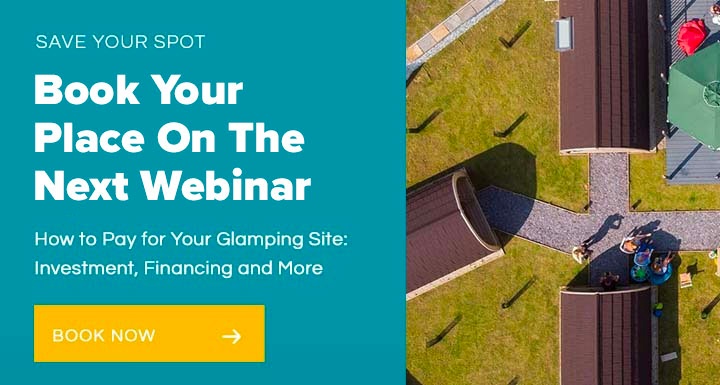Do's & Don't's Of Starting A Glamping Business
Created by Calum Published on
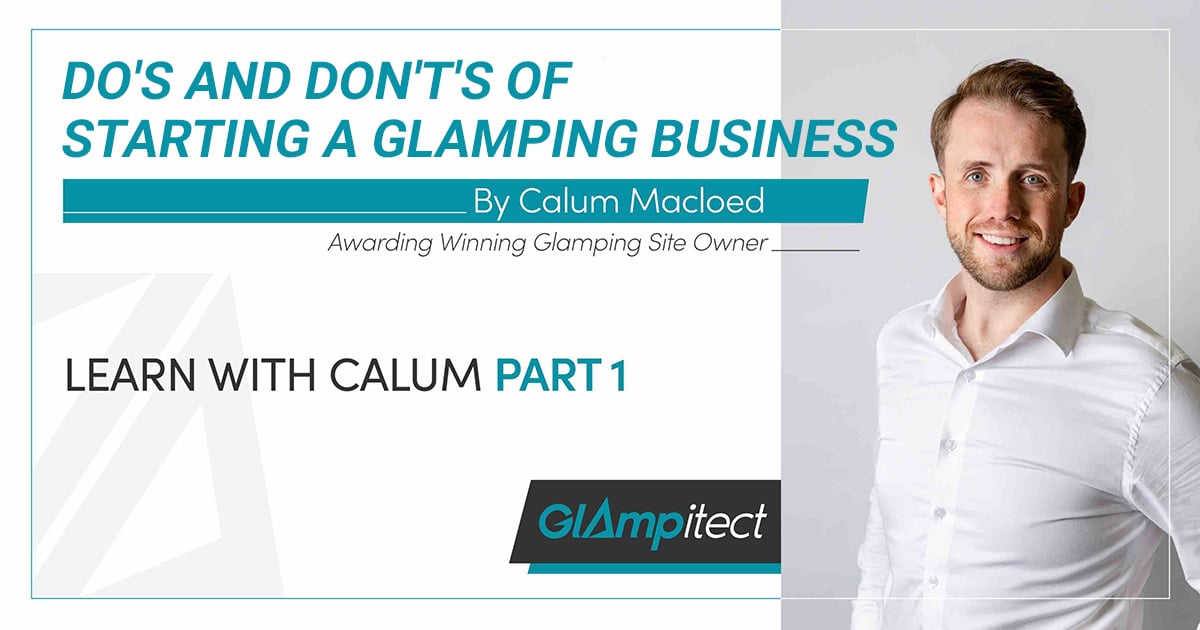
In this blog post we are going to be talking about:
- Why We’re Here
- The Do's and Don’t's of Starting a Glamping Business
Why We’re Here
I was in your position not long ago. In 2017 my first glamping site was no more than an idea. During the process of setting up that first site, I realised there were a lot of people wanting to set up glamping businesses but nobody to help them. This is how I came up with the idea for Glampitect. At first, I did everything in Glampitect; writing blogs, speaking with clients, completing feasibility studies and glamping planning applications. Quickly as the business grew, I passed pretty much all of these tasks on to other (much smarter than me) people that joined Glampitect as we grew.
I’ve realised recently that I’ve completely lost touch with the most important people in the World to Glampitect. Our company would be nothing without our friends, supporters and clients. You are the people that have enabled us to grow and help 1000s of potential glamping business owners since we were formed in 2019. I miss you guys want to come back to join you on your glamping journeys.
As much as I wish I could get back to speaking with you all on the phone and completing work for you, that’s not practical. In fact, there are so many of you that it is almost impossible, so I had to get my thinking cap on. Then I had the brainwave, webinars and blogs! I can speak with you all at once (and of course you can ask me questions on the webinars and have input to the topics of the blogs). So, from now on I will be hosting 1 webinar and writing 1 blog every month. The webinar will be at 6pm on the last Wednesday of each month and the blog will be released the following Wednesday.
Summary so far:
- I want to connect more with important people; friends, supporters and clients of Glampitect
- To do this I am going to start a monthly webinar and blog
- The webinar will be on the last Wednesday of each month and the blog post will be released the first Wednesday of the following month
The Do's and Don’t's of Starting a Glamping Business
Those with their finger on the pulse will know the first webinar has already happened and you’ll have worked out this is the related blog: “The Dos and Don’ts of Starting a Glamping Business”. I loved the session and I hope the 114 of you that joined me did too. Side note: I am thrilled so many of you managed to make it along!
See the webinar slides here
Before we start, please be aware this is not an exhaustive list. The Glampitect team compiled this list together, putting in one or two dos or don’ts each. All 17 of them deal with glamping so they know their stuff but there may be a few gaps, which I will try to fill in as we go through.
Who Am I?
We began by speaking about who I am and the work I have done in the glamping industry over the last few years. I’ll hold off from speaking too much about that just now, given you have already read the above. Instead, I’ll simply summarise in a few bullet points.:
- I am Calum MacLeod, founder of Glampitect, North Coast 500 Pods and Glamcompare
- I have worked on over 600 projects helping people start glamping businesses
- I own 2 glamping sites with another 3 in various stages of design and build
The Do's and Don’t's of Land for Your Glamping Business 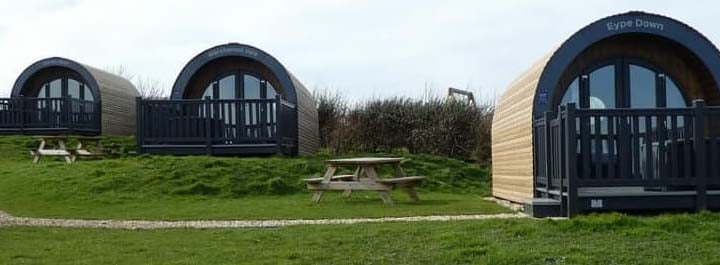
Do
- Be mindful of what is existing on the land; e.g., ecology, trees etc.
- Check if any forestry on your site is classified as ancient woodland.
- Think about access for pod/hut delivery.
There are a large number of things to think about when considering land for a glamping site, whether it is land you already own or land you are looking at purchasing or leasing. The most pertinent point is to ensure you are mindful of what is currently on the land; ecology, trees, potential flood risk etc. You also need to consider access, whether it’s for unit delivery or your visitors when you come to opening.
Other things to consider include planning probability (obviously), what the competition is like in the area and how likely it is that people would want to stay for a few nights where the land is. Some of the main things that catch out clients out are; flood risk, access issues and services costs. There are a number of ways to mitigate services costs that we will speak about another day.
Don’t
- Jump into a full planning application without some sort of pre check, whether it’s a feasibility study or pre-planning to gauge the risk of proceeding.
- Jump into buying land without doing a feasibility study first; £497 could save you £100k’s in wasted purchase.
- Carrying out any work on the site during the planning process as this can give potential objectors fuel and can actually work against you.
- Assume the most scenic plot of land is the most suitable. There may be planning laws that restrict development on that plot.
We’ve seen the negative implications of not doing some pre checks before buying land for a glamping site. It can end in tears, literally. On the flip side, some of our most thankful feasibility study clients have been the most negative studies. These clients are happy we have saved them from months of problems and sometimes literally £100k’s.
If you are in the planning process, try to avoid doing any work on the site until approved. It can give objectors a reason to complain about you to the council.
Now for a paradox – the nicer your plot of land is, the tougher it may be to gain planning approval. While we have gained planning approval in some of the most spectacular places in the UK, that doesn’t mean it wasn’t challenging!
There isn’t much to add here that’s very pertinent. These are a lot of the key things to avoid when considering land for your potential glamping site, whether it’s your own land or a plot you are looking to buy. The last thing I would add is that I’d suggest you don’t spend too much time or money on the land for your glamping site until you’ve done a feasibility study, it may blow the whole project wide open.
The Do's and Don’t's of Feasibility for Your Glamping Business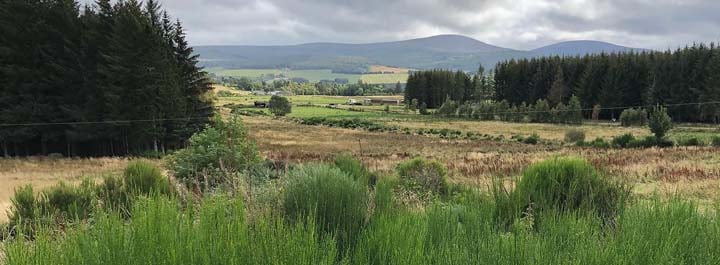
Do
- Thoroughly consider the policy and designations affecting your site as well as access provision, flood risk or public rights of way etc
- Consider USPs that you could offer which are not currently available at competitor sites in your area
- Research other sites in the local area to see how much they’re charging and how you can separate yourself from them
- Research costs & ROI
You must also take into consideration the policy and designations affecting your site, flood risks and public rights of way. These are all very important to factor into your design process. I would recommend researching the other sites in your local area and see how much they charge per night, think about what features they have and how can you make your site different. Adding USP’s will differentiate you from competitors and can add value to your ROI.
Planning is definitely the most important aspect of understanding the feasibility of your potential glamping site, followed by how much money the site will cost to set up. If set up budget is an issue, come along to our next webinar on financing your glamping site. I’ll be honest, as it stands the amount of money a glamping site will make is almost always very favourable just now. To further strengthen this there should be some consideration given to strong USPs.
Don’t
- Assume that a nearby refusal means the same result will happen in your case. Every site is different and every proposal must be considered on its own merits
- Propose a permanent structure for guests to stay in (such as houses or “architect designed structures”). That one structure could be the reason an application gets refused
- Ignore the results, but look for explanations to why they have occurred
If a site nearby has been refused, this does not automatically mean your application will end in the same result. Sites can be refused for many different reasons and each site will be assessed individually. I would recommend not to propose a permanent structure in your planning application such as a house as this is likely to be unnecessary for your site and could result in the application being rejected. In the event that your application is rejected, make sure to ask lots of questions and get a full understanding of the reasons why. Your application may only require a slight amendment to get you approval.
On the flip side, lots of nearby success stories don’t necessarily mean an easy approval. It does definitely make it more likely, as chances are your council’s policy is favourable to glamping, but issues can still arise. As mentioned, things like flood risk, ecology, access and more can present hurdles, regardless of how favourable your council’s policy is.
The Do's and Don’t's of Design for Your Glamping Busines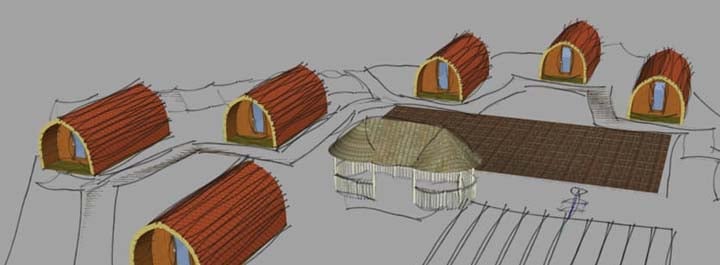
Do
- Make sure your application is robust and thorough, giving the council as much as possible that lines up with policy. A rushed job will lower your chances of approval.
- Research current sites within your council, some are very strict on scale and unit types.
- Try to incorporate sustainable elements to the proposal, e.g., renewable energy, E.V. charging and bike storage.
- Research. Find manufacturers you like/sustainability choices/have an idea of what you want from your site.
- Design a site that will be cost effective but will provide a memorable guest experience.
Research approved sites within your council and find common features. Are they all a similar scale? Do they all have the same unit types? Do they have sustainable elements? If there is a common denominator between, them this may be the most cost-effective way and that by following the same pattern you are more likely to be approved planning permission.
Spend time considering what you would like if you were a potential site visitor. It’s not always the case but chances are you will be your target market when it comes to opening your site. I can safely say I’m the target market for my own North Coast 500 Pods sites. When looking at your site design try to stop thinking with an owner’s hat on and think with a visitor’s hat, it will massively improve your site!
Don’t
- Put too much belief into Pre-App's at the moment. Some councils are doing them well but generally they are weak responses if you ever get one.
- Overcrowd your site, less is always better.
- Pressure the council into making a decision, some have high workloads which may cause delays.
We understand why it may seem a good idea to submit a Pre-App prior to a full planning application. However, from our experience we have found that Pre-App's tend to have a weak or no response, especially given council’s workload issues during the Covid pandemic. Submitting a full planning application allows you the opportunity to pressure the council into deciding whereas a Pre-App may lead you to the bottom of the pile.
If you are questioning whether you could ‘just squeeze two more pods in’ the answer is likely no! A cramped and overcrowded site will leave guests feeling like they have little to no privacy and will make your site less desirable.
Don’t think you need to get things perfect straight away with your design, chances are throughout the design process and beyond, things will change. Impacts of council and consultee comments could completely change things. Stick with the process and understand you may need to be flexible and the process will be easier for you.
The Do's and Don’t's of Sales for Your Glamping Business 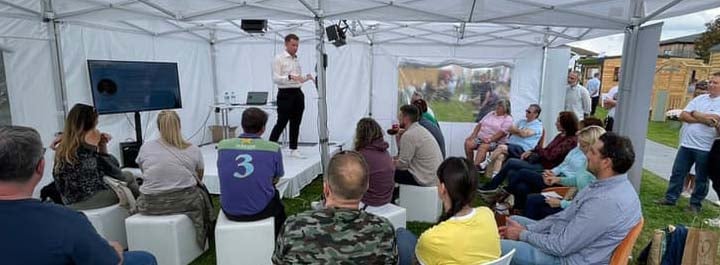
Do
- Utilise the knowledge and experience of Glampitect’s Client Relations team for help and advice. They have worked on 100’s of glamping projects.
- Consider what packages could work for your site, local produce / guest experience activities – food and drink offering.
- Think whether you include hot tubs/fire pits/sauna - will this attract sales?
- Define your target audience.
- Define booking frequency – minimum stays & off and on peak calendar / prices.
Glampitect have worked on 100’s of glamping sites and can help you understand the best way to attract visitors all your round. Little extra’s on site can make a huge impact to guests. Think about your target audience and what they may enjoy, whether it be facilities on your site or teaming up with local restaurants or experiences. This will always make your site more desirable.
Chances are you’re going to be busy, as glamping is so popular just now. In peak (summer) times, you’re probably going to be completely full and spring and autumn won’t be far behind. Where you’re really going to make your money is winter! I know, that sounds like it’s against the norm but let me explain. A standard glamping site will be at around 10-20% occupancy in the winter. That’s a lot of empty beds. If you can do work through sales and marketing to increase your occupancy to 50 or 60% in the winder, think how much more money you could make.
Don’t
- Rush things - create a plan
- Think you will just achieve a high nightly rate without adding value
- Think winter will be as busy as summer
Always create a plan and be realistic. While seasons may naturally impact your stays, if you want to increase the nightly rate you must ensure you add value to warrant the additional expense. Create a plan and try to stick to it for successful glamping site sales.
Don’t expect to be 100% full straight away. We did it with NC500Pods through fantastic marketing but it’s a pretty tough feat. Year 1 will be about starting and growing the brand, gaining traction with your website and visitors. Unless you break the norm, it will be year 2 that the bookings really start to roll in.
The Do's and Don’t's of Marketing for Your Glamping Business 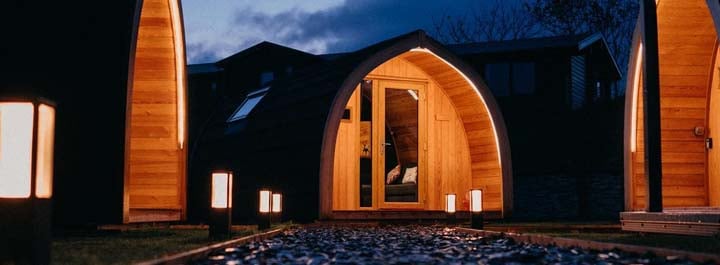
Do
- Invest time and money into marketing, it is what separates you from the ‘competition’
- Make sure to emphasise any unique or special characteristics of your site in your marketing to set you apart from the competition
- Ensure marketing is based around value and unique guest experience
- Understand where are you being seen and by whom
- Know your ideal customer – what they want, like and expect
Marketing is the most important thing for any successful business. If people do not know your business exists, how will they know to come and stay with you? Ensure your marketing is directed at your target audience and think about what they may want and show them how staying at your site can provide a unique guest experience that other sites cannot. I can guarantee the more you invest in marketing the more popular your site will be.
I’m just going to reiterate this one... marketing, marketing, MARKETING. Once you set up there is nothing more important than this for a successful glamping site.
Don’t
- Have an ugly website. The main point from this is gaining trust early on
- Rely on one form of marketing
There are many forms of marketing. One of the most popular is social media, however most marketing will lead directly to your website and therefore this must be the strongest and most impressive website it could possibly be. This will impact whether a guest continues their booking through your website or decides they do not want to stay as ‘it doesn’t look as good online’.
Don’t think that you need loads of different forms of marketing for a successful (small) glamping site. Definitely have more than one but it could be 2, Facebook and Instagram. Going on sites such as booking.com and Airbnb represent another great strand of marketing.
The Do's and Don’t's of Build for Your Glamping Business 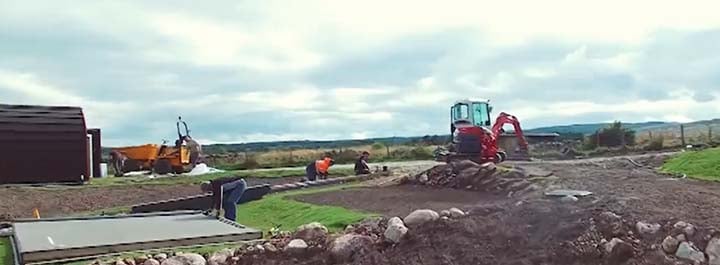
Do
- Make sure you ask Glampitect’s client relations team for manufacturer recommendations. This will connect you directly to trusted suppliers who can deliver, as there are a lot of cowboys out there
- Research your build partners – do they have relevant experience – can you see examples or visit their workshop?
Over the years we have built strong relationships with manufacturers. We have dealt with the ‘cowboy builders’ and we have dealt with the professionals. We will never recommend a manufacturer without know they are capable of delivering what they offer and have physical examples of their work for you to see.
Speak with us about the build for your glamping site. We can recommend some great groundwork contractors that have worked on glamping sites in the past and they work UK wide. Speak with them early (just when you start planning) to ensure everything you’re dreaming of is physically possible.
Don’t
- Go cheap on a manufacturer. Go for Quality. The real sweet spot for units is £25-35k.
- Think by spending double that you are guaranteed to get double the nightly rate.
- Expect to be open super quickly or in a matter of months from your initial idea – the planning process can take several months and manufacturer lead times/build the same.
- Underestimate the amount of work required if self-building units or completing your own groundworks. Chances are, it’s a lot more complicated than it seems!
- Just get one quote.
There is a famous saying ‘quality over quantity’ and this applies when choosing your manufacturer. We would always recommend getting more than one quote. The average cost for a quality unit is £25k - £35k. Spending more than this doesn’t necessarily mean you are guaranteed a higher rate, although if it is adding value, it can be factored in when deciding your prices. Opening a glamping site is a time-consuming process and while you may think building the pods or doing the groundwork yourself can speed up the process, there is a reason why it takes the time it does.
Don’t expect everything to go swimmingly! You’re going to encounter problems, be ready to problem solve. If you have a can-do attitude and you’re willing to problem solve, the journey will be fun. If you find it hard to problem solve, this may be a tough ride!
The Other Do's and Don’t's for Your Glamping Business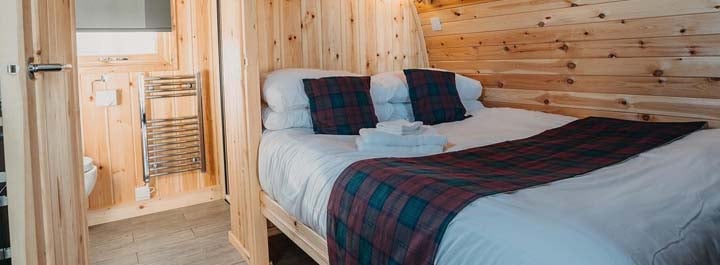
Do
- Be prepared for a lot of hurdles along the way. There’s a lot to overcome but it’s worth it
- Find a USP that makes you stand out from the crowd. Be creative
- Create an operational structure
With any project, there are always hurdles along the way and you may feel like you want to give up at times. To avoid this, create an operational structure and remember ‘you haven’t come this far just to come this far!’ The satisfaction of seeing your site as the end will be worth all the hard work! Find your USP, be creative and stick at it!
Do enjoy it! Enjoy the process and enjoy it when you’re open. This should be fun! You may be leaving your job at the end of this or creating an amazing new income. You have the power to create something beautiful, enjoy!!
Don’t
- Skimp on the little extras – complimentary toiletries, a welcome card or some fresh flowers in a vase can really make a difference to the guest experience and can be what ensures visitors keep coming back, while being very cost-effective to provide
- Base decisions on other glamping sites in the local area. Make sure it is a thoroughly considered idea before jumping into the application process.
Small extras for guests will have a huge impact. A small welcome card or complimentary toiletries will add a real ‘personal touch’ and will keep guests coming back. Adding a little extra is not expensive and does not break the bank, but it does make guests feel special when they are staying with you.
Don’t think this is going to be easy, it will be hard but it will be very, very worth it.
Conclusion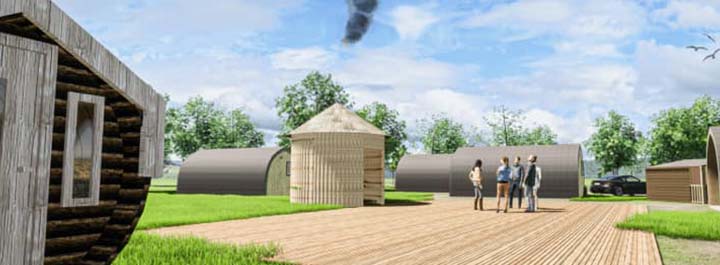
The most important thing and key take away from all of this is to think about all the aspects of opening a glamping site and ensure it is exactly what you want. If your heart is not in it, it will show! You have to want it enough to have it.
I hope this piece has been helpful for you, whether you’re thinking about starting your glamping site or you’re already open. I look forward to speaking with you all on our next webinar on Wednesday 27th of April!
